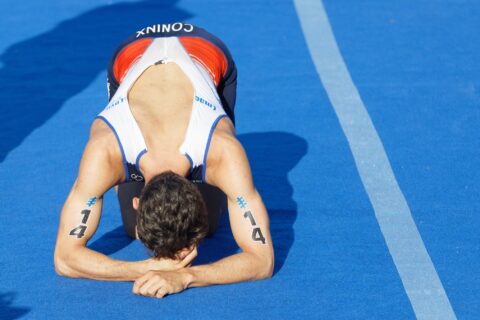
Understanding the Norwegian Training Method
Lately, the Norwegian method for endurance training has the world abuzz. In reality, its core tenets have been around for decades.

Lately, the Norwegian method for endurance training has the world abuzz. In reality, its core tenets have been around for decades.

In part two of our new video series, Dr. Stephen Seiler talks with his daughter about her recovery from overtraining and injury.

We know him as a sports scientist, but he’s also a father and coach. In this eight-part video series, we see Dr. Stephen Seiler in all three roles as he talks candidly with his daughter Siren about her return to training after struggling with an eating disorder and RED-s.

So you want to give the polarized training approach a go? Here’s how to map out your week using the 80/20 training model.

You might have heard of polarized training, but do you know how to implement it in your training? We’re here to help you get started.

The benefits of polarized training are well known, but is there a minimal dose needed? We find out.

Load, stress, strain—they’re terms we hear a lot in sports science, but what do they mean? Dr. Stephen Seiler explores how your internal response to external load will change as you become fitter and more durable.

Get the right mix of intensity at the right time and polarized training pays off. Take a disciplined approach for best results.

The concepts of central and peripheral conditioning help explain why an effective training base period leads to speed and durability in the race season.

Sticking to 80/20 and training by heart rate are just two of the key polarized training rules you’ll want to follow.

Polarized training is most successful when your body is ready for high-intensity sessions. Understanding how your autonomic nervous system works can help you time it right.

Polarized training is all about building duration without incurring high stress. Where does your steady state break down and what can you do about it?

Dr. Stephen Seiler explains why polarized training is a winning strategy for the long game of endurance sports. By balancing the stress of training, athletes see bigger gains over time.

Polarized training is a case where science hustled to catch up with real-world results. Coach Trevor Connor explains how sport science misunderstood the physiology and inadvertently shifted the focus toward high-intensity training.

Is 80/20 really the best mix of intensities? And what’s the best way to categorize training? Dr. Seiler has a simple method to get you started.

To truly polarize your training, you need to focus your training in two key zones. Coach Trevor Connor explains how this works for the sport of cycling, but the physiology applies to all endurance sports.

Most popular training methods claim to build your aerobic engine, but the training to achieve that goal will look and feel very different.

It can be very easy to train at a moderate intensity all the time, which can be a surefire way to land in an overreached state. Polarized training can help prevent that—and in this video, Dr. Seiler explains how.